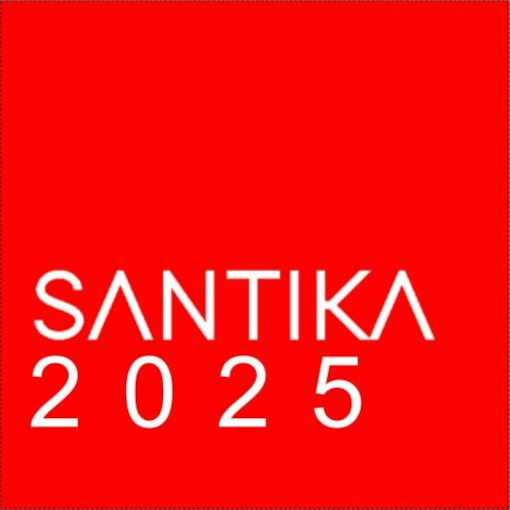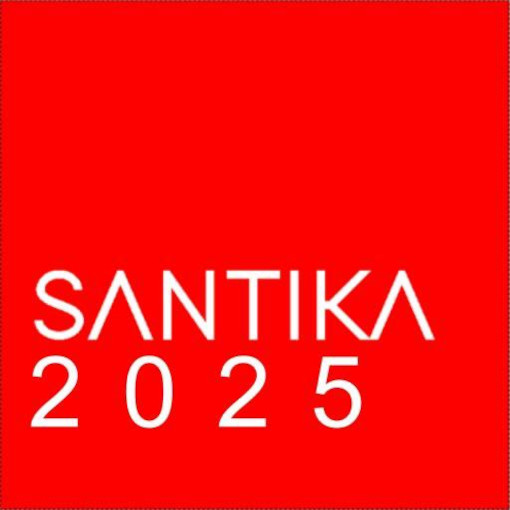Gamifikasi Tepat Guna: Penyusunan Desain Bersifat Gim yang Sistemik, Efisien, dan Mengakomodasi Jenis-Jenis Pengguna
DOI:
https://doi.org/10.33005/santika.v1i0.29Keywords:
gamifikasi, desain bersifat gim, sistemik, model Hexad, pendidikan tinggiAbstract
Gamifikasi adalah salah satu teknologi dan metode terkini di dunia pendidikan, yang dapat membuat proses pembelajaran lebih lancar dan menyenangkan. Perkembangan gamifikasi yang pesat telah melahirkan konsep-konsep penting seperti desain bersifat gim (DBG) dan penyesuaian gamifikasi dengan jenis-jenis penggunanya. Saat ini, penyesuaian tersebut umum dilakukan berupa personalisasi otomatis gamifikasi, agar setiap pengguna mendapatkan unsur-unsur DBG yang dibutuhkannya saja. Walau demikian, penerapan metode tersebut masih memiliki kelemahan-kelemahan berupa pemborosan sumber daya dan kurangnya sifat sistemik DBG yang dihasilkan. Di penelitian ini, kami mencoba menerapkan pendekatan untuk mengatasi kelemahan-kelemahan itu. Pendekatan kami menggunakan alur yang dimulai dari rekayasa kebutuhan untuk mendapatkan distribusi jenis-jenis pengguna di kalangan calon-calon pengguna. Tahap berikutnya adalah penentuan prioritas unsur-unsur DBG berdasarkan distribusi tersebut, yang dilanjutkan dengan penyusunan DBG untuk sistem gamifikasi utuh. Kami menggunakan kuesioner berdasarkan model Hexad untuk rekayasa kebutuhan tersebut, dan kami menerapkan alur tersebut di studi kasus di program studi Informatika UPN ”Veteran” Jawa Timur. Penerapan tersebut menghasilkan DBG yang dapat menjadi model gamifikasi yang sistemik dan tepat guna di pendidikan tinggi.
References
[2] N. Whitton dan M. Langan, “Fun and games in higher education: an analysis of UK student perspectives,” Teaching in Higher Education, vol. 24, no. 8, hal. 1000–1013, Nov 2019.
[3] F. F.-H. Nah, Q. Zeng, V. R. Telaprolu, A. P. Ayyappa, dan B. Eschenbrenner, “Gamification of Education: A Review of Literature,” dalam HCI in Business. HCIB 2014. Lecture Notes in Computer Science, vol 8527, 2014, hal. 401–409.
[4] C. Dichev, D. Dicheva, G. Angelova, dan G. Agre, “From gamification to gameful design and gameful experience in learning,” Cybernetics and Information Technologies, vol. 14, no. 4, hal. 80–100, 2014.
[5] M. Keppell, “Personalised Learning Strategies for Higher Education,” dalam International Perspectives on Higher Education Research, vol. 12, 2014, hal. 3–21.
[6] P. M. Blom dkk., “Towards personalised gaming via facial expression recognition,” dalam Proceedings of the 10th AAAI Conference on Artificial Intelligence and Interactive Digital Entertainment, AIIDE 2014, 2014, hal. 30–36.
[7] A. Knutas, R. van Roy, T. Hynninen, M. Granato, J. Kasurinen, dan J. Ikonen, “A process for designing algorithm-based personalized gamification,” Multimedia Tools and Applications, vol. 78, no. 10, hal. 13593–13612, Mei 2019.
[8] É. Lavoué, B. Monterrat, M. Desmarais, dan S. George, “Adaptive Gamification for Learning Environments,” IEEE Transactions on Learning Technologies, vol. 12, no. 1, hal. 16–28, 2019.
[9] A. Mora, G. F. Tondello, L. E. Nacke, dan J. Arnedo-Moreno, “Effect of personalized gameful design on student engagement,” dalam 2018 IEEE Global Engineering Education Conference (EDUCON), 2018, hal. 1925–1933.
[10] A. Marczewski, “User Types,” dalam Even Ninja Monkeys Like to Play: Gamification, Game Thinking and Motivational Design, 1 ed., CreateSpace Independent Publishing Platform, 2015, hal. 65–80.
[11] S. Deterding, D. Dixon, R. Khaled, dan L. Nacke, “From game design elements to gamefulness: Defining ‘gamification,’” dalam Proceedings of the 15th International Academic MindTrek Conference: Envisioning Future Media Environments, MindTrek 2011, 2011, hal. 9–15.
[12] Z. Zainuddin, S. K. W. Chu, M. Shujahat, dan C. J. Perera, “The impact of gamification on learning and instruction: A systematic review of empirical evidence,” Educational Research Review, vol. 30, Jun 2020.
[13] M. B. Armstrong, R. N. Landers, dan A. B. Collmus, “Gamifying recruitment, selection, training, and performance management: Game-thinking in human resource management,” dalam Emerging Research and Trends in Gamification, 2015, hal. 140–165.
[14] J. Díaz-Ramírez, “Gamification in engineering education – An empirical assessment on learning and game performance,” Heliyon, vol. 6, no. 9, Sep 2020.
[15] T. W. Kim dan K. Werbach, “More than just a game: ethical issues in gamification,” Ethics and Information Technology, vol. 18, no. 2, hal. 157–173, Jun 2016.
[16] M. Csikszentmihalyi, “Intrinsic Motivation and Effective Teaching,” dalam Applications of Flow in Human Development and Education, Dordrecht: Springer Netherlands, 2014, hal. 173–187.
[17] S. Deterding, “The lens of intrinsic skill atoms: A method for gameful design,” Human-Computer Interaction, vol. 30, no. 3–4, hal. 294–335, 2015.
[18] C. E. Lopez dan C. S. Tucker, “The effects of player type on performance: A gamification case study,” Computers in Human Behavior, vol. 91, hal. 333–345, Feb 2019.
[19] J. Hamari dan J. Tuunanen, “Player Types: A Meta-synthesis,” Transactions of the Digital Games Research Association, vol. 1, no. 2, hal. 29–53, Mar 2014.
[20] A. Marczewski, “Introduction to Gamification Part 9: Elements and Mechanics,” Gamified UK, 2019. [Daring]. Tersedia pada: https://www.gamified.uk/2019/08/21/introduction-to-gamification-part-9-elements-and-mechanics/. [Diakses: 09-Okt-2020].
[21] G. F. Tondello, R. R. Wehbe, L. Diamond, M. Busch, A. Marczewski, dan L. E. Nacke, “The Gamification User Types Hexad Scale,” dalam Proceedings of the 2016 Annual Symposium on Computer-Human Interaction in Play, 2016, hal. 229–243.
[22] G. F. Tondello, A. Mora, A. Marczewski, dan L. E. Nacke, “Empirical validation of the Gamification User Types Hexad scale in English and Spanish,” International Journal of Human-Computer Studies, vol. 127, hal. 95–111, Jul 2019.
[23] M. Tavakol dan R. Dennick, “Making sense of Cronbach’s alpha,” International Journal of Medical Education, vol. 2, hal. 53–55, Jun 2011.
[24] P. W. Atmaja dan E. P. Mandyartha, “Gamification of Assessment Test through Multiple Question Paths to Facilitate Participants’ Autonomy and Competence,” Letters in Information Technology Education, vol. 3, no. 1, hal. 9–17, 2020.
[25] M. Mavrikis, S. Gutierrez-Santos, dan A. Poulovassilis, “Design and evaluation of teacher assistance tools for exploratory learning environments,” dalam Proceedings of the Sixth International Conference on Learning Analytics & Knowledge - LAK ’16, 2016, hal. 168–172.
[26] S. de Freitas dan T. Neumann, “The use of ‘exploratory learning’ for supporting immersive learning in virtual environments,” Computers and Education, vol. 52, no. 2, 2009.
[27] J. Gressick dan J. B. Langston, “The Guilded Classroom: Using Gamification to Engage and Motivate Undergraduates,” Journal of the Scholarship of Teaching and Learning, vol. 17, no. 3, hal. 109–123, Jul 2017.
[28] M. de Hei, J.-W. Strijbos, E. Sjoer, dan W. Admiraal, “Thematic review of approaches to design group learning activities in higher education: The development of a comprehensive framework,” Educational Research Review, vol. 18, hal. 33–45, Mei 2016.
[29] J. A. Velez, D. R. Ewoldsen, M. D. Hanus, H. Song, dan J. A. Villarreal, “Social Comparisons and Need Fulfillment: Interpreting Video Game Enjoyment in the Context of Leaderboards,” Communication Research Reports, vol. 35, no. 5, hal. 424–433, Okt 2018.
[30] M. D. Hanus dan J. Fox, “Assessing the effects of gamification in the classroom: A longitudinal study on intrinsic motivation, social comparison, satisfaction, effort, and academic performance,” Computers & Education, vol. 80, hal. 152–161, Jan 2015.
[31] F. C. Eugenio dan A. J. T. Ocampo, “Assessing Classcraft as an Effective Gamification App based on Behaviorism Learning Theory,” dalam Proceedings of the 2019 8th International Conference on Software and Computer Applications - ICSCA ’19, 2019, hal. 325–329.







